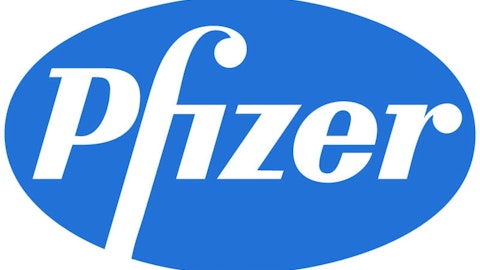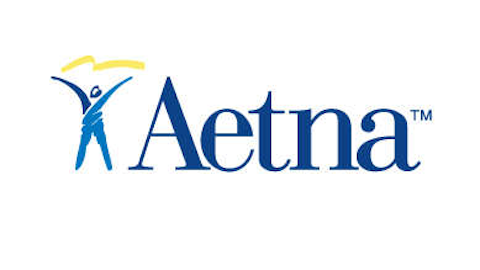What are the benefits of an exchange?
With transparent pricing and easy-to-understand price tiers (such as California’s state exchange, which will feature bronze, silver, gold, and platinum packages), consumers should benefit as insurance companies are forced to openly compete against one another for new members. If one company fails to price its policies accordingly, it will lose business, plain and simple. In short, competition will promote innovation and lower premium prices.
What could go wrong?
While this sounds like a “happily ever after” plan, there are plenty of factors still left to be solved.
For instance, what if many of the national health insurers choose not to participate in many of the state exchanges? In May, California unveiled the participants in its state-run exchange. Of the 13 health-benefits providers, notably absent was UnitedHealth Group Inc. (NYSE:UNH), Aetna Inc. (NYSE:AET), and CIGNA Corporation (NYSE:CI). Although these three insurers dominate the commercial side of the business and only maintain 7% of the cumulative individual insurance market in California, it seems rather ominous to me that they would pass on their chance to compete in California’s huge patient pool. Furthermore, it points to the growing skepticism that many insurers (even the big ones) have about the upcoming implementation of Obamacare and the initiation of state exchanges.
If you think California was just an oddball example, you may want to think again. When the nation’s biggest insurers were asked how many state exchanges they’d enter, UnitedHealth Group Inc. (NYSE:UNH) guided to a minimum of 10, but no more than 25. WellPoint, Inc. (NYSE:WLP), the company behind Blue Cross Blue Shield, is only entering the 14 states where it already currently operates. It’s the same story for Aetna Inc. (NYSE:AET), which plans to enter just 14 states.
If these insurers choose not to compete in new states, then that could result in the bulk of health insurance underwriting falling into the hands of a select few parties in each state. Although the medical loss ratio will mandate that 80% of premiums collected be spent on health care services, we have seen time and again that pricing power ultimately lies with the health-benefits providers. Less competition could create fewer choices and less incentive to be price competitive.
How is this good for insurers?
Health exchanges are going to be great news for insurers that are focused on attracting the roughly 16 million people who will be covered by the Medicaid expansion. Insurers have been angling for the past two years to get a bigger piece of the government-run health care pie known as Medicare. Take WellPoint as an example, which purchased AMERIGROUP for $4.5 billion to become the nation’s largest Medicaid-based insurer last year. Another example is CIGNA, which purchased HealthSpring in 2011 for $3.8 billion, a hefty 37% premium at the time. The point is that the margins on government-run Medicaid might not be anything to write home about, but the sheer strength in numbers is enough to make this is a very profitable venture for these two health-benefits providers.
How will exchanges hurt insurers?
One of the biggest detriments to insurers at the moment is the lack of knowledge most people have with regard to what Obamacare can do for them. In a March Kaiser Health Tracking Poll, a whopping 48% of people responded as “hearing nothing at all” as to whether their state was setting up a health exchange! How are insurers like WellPoint or CIGNA expected to gain new members if the people they’re trying to attract have no clue where to go, or how their state’s exchange is being run?
Another factor to consider is that even if consumers have the information in front of them, will they be able to use it in a meaningful way to make smarter decisions? Many polls thus far demonstrate how few Americans are well-versed in what Obamacare could mean for them, so the prospect of the consumer making an educated choice isn’t a certainty, either.
Don’t discount the possibility, as well, that high levels of competition could make it too costly for insurers to enter certain markets. That could be the precise case why UnitedHealth Group Inc. (NYSE:UNH), despite its size, chose to keep its feet out of the water in California.
When can I buy insurance on my state’s exchange?
For those states that are ready, consumers will be able to begin buying health insurance from exchanges as early as Oct. 1, with the full implementation of the PPACA going into effect on Jan. 1.
Now you know
Hopefully you now have a better understanding of why the state-based health exchanges were formed, how they will benefit consumers, and what drawbacks might be present. Furthermore, understanding the reasoning, benefits, and risks behind the health exchanges is almost certain to give you a better understanding of the insurance sector and its major players. Ultimately, as long as health-benefits providers still control their own premium pricing, I don’t feel that the sector will have too much to fear — but that’s just one man’s opinion, of course.
The article Everything You Ever Wanted to Know About Obamacare’s State-Run Health Exchanges originally appeared on Fool.com.
Fool contributor Sean Williams has no material interest in any companies mentioned in this article. You can follow him on CAPS under the screen name TMFUltraLong, track every pick he makes under the screen name TrackUltraLong, and check him out on Twitter, where he goes by the handle @TMFUltraLong.The Motley Fool owns shares of, and recommends, WellPoint. It also recommends UnitedHealth Group.
Copyright © 1995 – 2013 The Motley Fool, LLC. All rights reserved. The Motley Fool has a disclosure policy.



